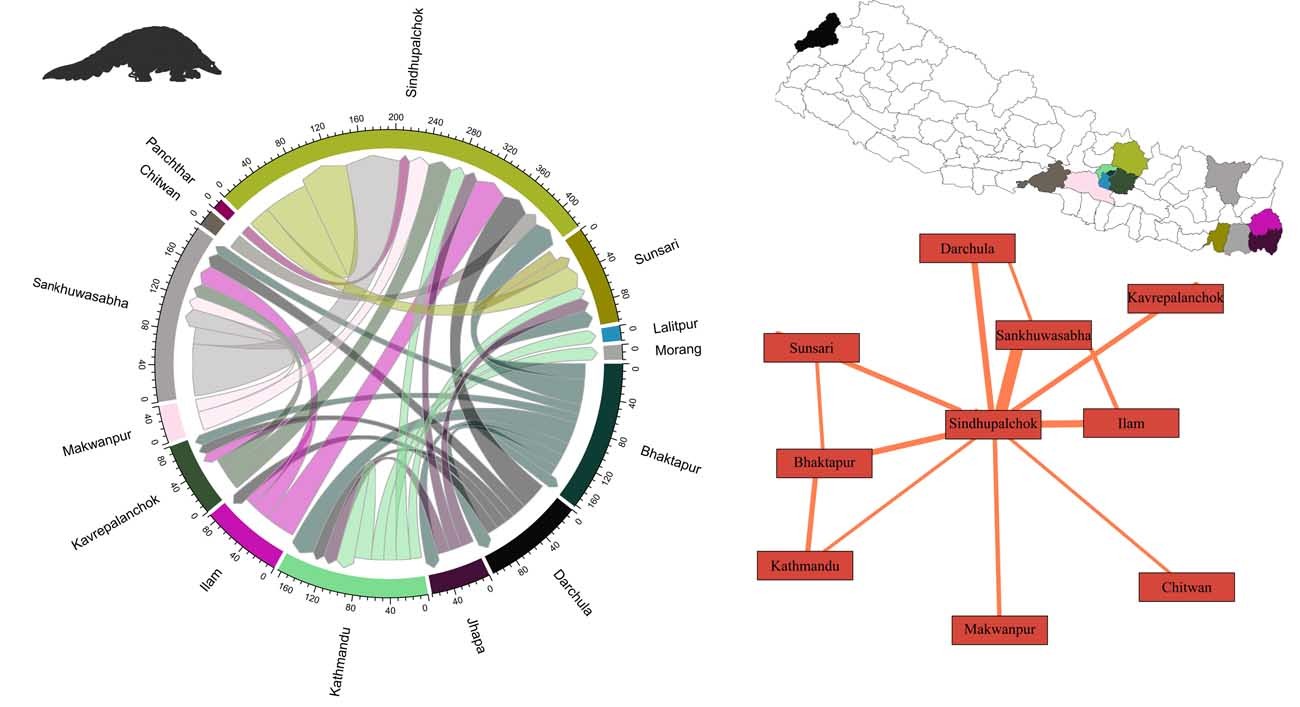News & Activities
Research Reveals Increasing Trend in Wildlife Trade
Wildlife trade is a major challenge in Nepal with news of seizures being reported frequently. However, there are limited studies on the trends, patterns, and networks of the wildlife trade in the country. Recent research has indicated an increase in the wildlife trade in Nepal over the years for all species except for rhinoceros.
The study is the first of its kind to assess the national illicit wildlife trade in Nepal in detail. Nepal acts as both a source and transit country for trade. The wildlife trade of protected species is found to be prevalent in 67% of districts of Nepal and increasing. Kathmandu, districts bearing wildlife species, and areas bordering India and China are the hubs. The research indicates the presence of coordinated international illicit wildlife trade syndicate in Nepal.
The research indicates the presence of coordinated international illicit wildlife trade syndicate in Nepal.
The research conducted by a team of researchers lead by Dr. Prakash K. Paudel, Senior Scientist, Center for Conservation Biology, Kathmandu Institute of Applied Scineces assessed the trend of wildlife trade over the 5 years (2011-2015) by analyzing wildlife seizures and arrests records from various sources. The study is published in the journal Conservation Science and Practice.
Experts of this research team include Dr. Prakash K. Paudel, Center for Conservation Biology, Kathmandu Institute of Applied Sciences, Nepal, Dr. Krishna Prasad Acharya, Ministry of Industry, Tourism, Forest and Environment, Karnali Province, Nepal, Dr. Hem Sagar Baral, Zoological Society of London, Nepal, Prof. Dr. Joel Heinen, Florida International Univeristy and Dr. Shant Raj Jnawali, WWF Nepal.
“Our reserch suggest that Nepal acts both as a source and a transit country. Illicit wildlife trade may have devastating consequences for Nepal's wildlife populations given its increasing national and global connectivity and proximity with large Indian and Chinese markets. It is worrisome”, said Dr. Paudel.

The study revealed 830 wildlife-related arrest cases were reported in the five years between January 2011 and December 2015. Out of which 87% of the arrests included wildlife seizures. 56% of the total arrests included confiscation of globally threatened species. 97% of the reported species are native to the country but it is not clear if all of them have origin in Nepal.
Research suggests both general and species-specific trade network in Nepal. Bengal tiger (Panthera t. tigris), pangolin (Manis crassicaudata, M. pentadactyla), common leopard (Panthera pardus), bear (Ursus arctos, Ursus thibetanus, and Melursus ursinus) and red panda (Ailurus fulgens) are among top reported wildlife species in the illict trade.
For the effective control of the wildlife trade, the researchers suggest the importance of improving law enforcement, increasing community awareness and participation in conservation, strengthening conservation organizations, and reducing rural poverty. The trade and business routes connecting Nepal’s business centers and Nepal’s neighbors also require strict security and surveillance.

The World Health Organisation (WHO) has indicated that 70 percent of new viruses originate in animals. AIDS, SARS, Ebola, and MERS, are a few examples of viruses originating from wild animals. The studies have suggested the connection of COVID-19, an ongoing pandemic disease caused by a novel coronavirus, with the wildlife trade. This research is important to carry out a well-coordinated action to curb wildlife trade in Nepal.
COVID-19, AIDS, SARS, Ebola and MERS, for example, have originated in wild animals. This research is important to carryout a well coordinated action to curbe wildlife trade in Nepal.
By: Simrik Singh Bhandari, Center for Conservation Biology, KIAS.


